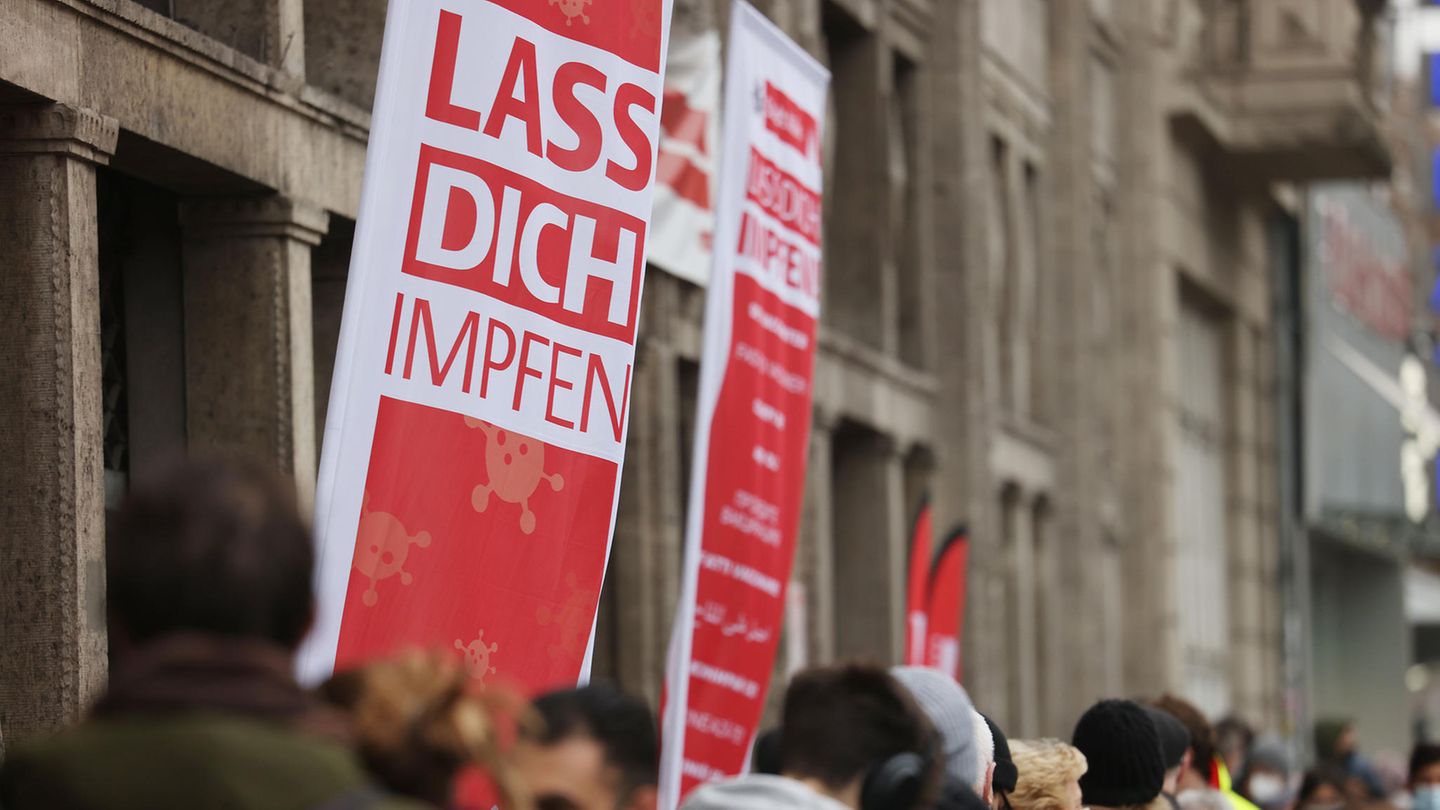Again, the RKI reports maximum values - not only for the incidence, but also for the daily number of new infections. Within one day, almost 53,000 people were newly infected with the coronavirus. The data suggest that it particularly affects the unvaccinated.
The number of new corona infections transmitted to the Robert Koch Institute within one day has reached a new high. The Robert Koch Institute (RKI) gave the number of cases reported by the health authorities on Wednesday morning as 52,826. Exactly one week ago there were 39,676 infections. The RKI gave the 7-day incidence at 319.5 – also a high. For comparison: the previous day the value was 312.4, a week ago it was 232.1 (previous month: 66.1). This is evident from the numbers that reflect the status of the RKI dashboard at 4:01 a.m. Last Thursday, the number of new infections reached 50,196, a record since the beginning of the pandemic.
Corona data from several federal states indicate a significantly higher proportion of new infections among unvaccinated people than among people with full vaccination protection. Although unvaccinated people are probably tested much more frequently, the values from the point of view of experts still allow a rough assessment of the pandemic, separated by vaccination status.
In the corona hotspot of Saxony, for example, where the rate of fully vaccinated people is currently the lowest nationwide at less than 60 percent, there was recently an immense gap between the two groups: while the incidence of those vaccinated on Tuesday was a good 64 cases per 100,000 people was within seven days, this value was around 28 times as high for those who were not or not fully vaccinated: a good 1823 cases.
Unvaccinated people become infected more often
Such numbers are “certainly somewhat distorted,” said Carsten Watzl, Secretary General of the German Society for Immunology, with a view to factors such as the test frequency. Unvaccinated people have to be tested, for example, if 3G rules apply in restaurants or at work. Young students who are not (yet) vaccinated are also regularly checked for Covid-19. People with a vaccination certificate, on the other hand, often did not have to present a test. Therefore, especially in this group, some new infections could have gone undetected.
These factors are not so important that they fully explain the difference, said Watzl of the German press agency. “It is therefore still true that people who have not been vaccinated become infected much more frequently than those who have been vaccinated.” Among other things, he referred to the corona cases in the hospital. According to Watzl, the difference becomes very clear in the incidence of hospitalization.
According to the latest available data from the Robert Koch Institute (RKI), from October 18 to 24 (calendar week 42) per 100,000 people, six times more from the group of unvaccinated 18- to 59-year-olds came to the hospital because of Covid-19 than from the Vaccinated people of this age group. In people aged 60 and over, the incidence of hospitalization for the unvaccinated was 4.7 times as high. A vaccination does not protect 100 percent, so it cannot completely prevent infections or severe courses in vaccinated people.
Some federal states separate the incidence of vaccinated and unvaccinated people
In addition to Saxony, the seven-day incidence of new infections is also given in Thuringia, Bavaria and Saxony-Anhalt separately for vaccinated and unvaccinated persons – sometimes daily or weekly. In contrast, Schleswig-Holstein and Lower Saxony, for example, do not make such a distinction.
In Bremen, the federal state with the highest vaccination rate in Germany (Tuesday: 79.3 percent), there was recently a discrepancy between the groups, albeit not as clear as in Saxony: In the first week of November, the incidence in the Hanseatic city was below the Unvaccinated in almost 261 and among vaccinated people in a good 41.
There are no uniform rules nationwide as to who belongs to the respective group. Saxony, for example, classifies corona cases without information on the vaccination status among those who are not (fully) vaccinated. Baden-Württemberg also did the same until last week. But the proportion of people with an unknown vaccination status in the group of unvaccinated people was very high at 83 percent. Since Friday, the State Health Office in Stuttgart no longer reports the incidence separately according to vaccination status.
Vaccination protection in early February at 82 percent
The Robert Koch Institute (RKI), on the other hand, in its surveys comparing vaccinated and unvaccinated people, excludes all cases with incomplete information on the vaccination status or partial vaccination. The authority regularly gives a nationwide overview of the separate incidence – unlike the states, however, only for those affected with symptoms. The most recent RKI data by vaccination status shows that in calendar week 42 the seven-day incidence of symptomatic Covid cases in both 18- to 59-year-old unvaccinated persons and those aged 60 and over was around three times as high as in full Vaccinated people of the same age group.
In its weekly report last Thursday, the RKI wrote that, since the beginning of February, protection against infection with symptoms through vaccination has been 82 percent for 18 to 59-year-olds and 80 percent for older people. The institute pointed out, however, that the values should be interpreted with caution: the infection rate, vaccination rates and possibly different test behavior in vaccinated and unvaccinated people could lead to bias.
Hospitalization incidence is increasing
According to the new information, 294 deaths were recorded across Germany within 24 hours. A week ago there were 236 deaths. The RKI has counted 5,129,950 detected infections with Sars-CoV-2 since the beginning of the pandemic. The actual total number is likely to be significantly higher, as many infections are not recognized.
The number of corona patients admitted to clinics per 100,000 inhabitants within seven days – the most important parameter for a possible tightening of the corona restrictions – was given by the RKI on Tuesday at 4.86 (Monday: 4.65). With the indicator it must be taken into account that hospital admissions are sometimes reported with delay. A nationwide threshold, from when the situation can be viewed critically, is not provided for the incidence of hospitalization, among other things because of large regional differences. The previous high was around 15.5 around Christmas time.
The RKI stated the number of those who had recovered at 4,540,900. The number of people who died with or with a proven infection with Sars-CoV-2 rose to 98,274.
Source From: Stern




